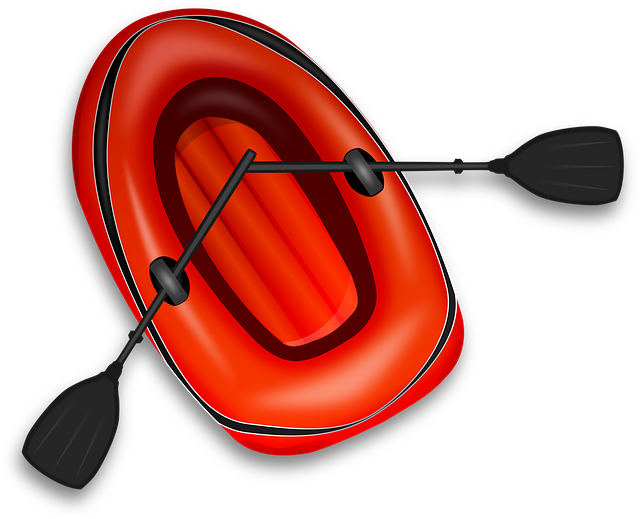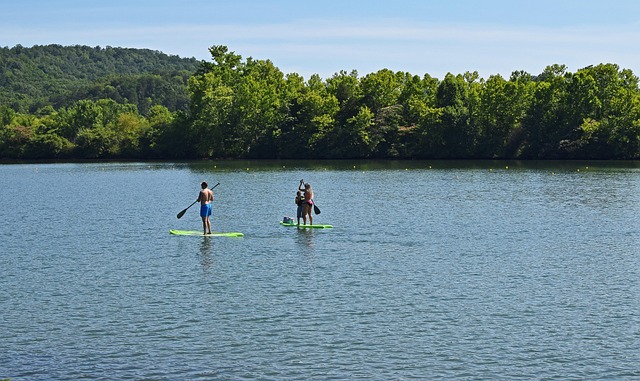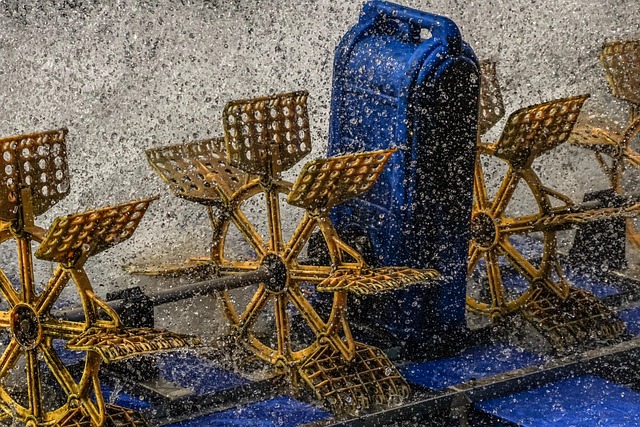High-quality materials and robust construction, including advanced composite fabrics and waterproof membranes, make inflatable paddle boards (IPBs) durable and environmentally sustainable. Rigorous testing and proper care extend their lifespan, making them a reliable choice for outdoor adventurers. Design innovations in architecture mirror IPB durability, enhancing structural integrity and adaptability. IPBs offer a balance between affordability and durability, with modern manufacturing techniques ensuring longevity in various water conditions.
Durable construction is a key consideration in modern building practices, ensuring structures withstand the test of time and harsh environmental conditions. This comprehensive guide explores various aspects of durability, from innovative design to cost-effective solutions. We delve into specific applications like inflatable paddle boards, showcasing how materials and designs can revolutionize longevity. By examining testing procedures and weatherproofing techniques, this article offers valuable insights for professionals seeking robust, economical structures—a must-read for anyone interested in durable construction.
Understanding Durable Construction Materials

Durable construction materials are the backbone of any robust and long-lasting structure, be it a home, bridge, or even an inflatable paddle board. In today’s market, with a growing focus on sustainability and longevity, understanding these materials is more crucial than ever. When we talk about durable construction, we’re not just referring to resistance against physical wear and tear; it also encompasses environmental durability, ensuring that the materials used do not depreciate quickly due to natural elements like extreme weather conditions or biological degradation.
For instance, high-quality plastics used in making inflatable products like paddle boards exhibit superior durability. These materials are designed to withstand various stresses, from the pressure of air inflation to the rigors of outdoor use. By choosing durable construction materials, we not only ensure the longevity of our buildings and goods but also reduce waste, a significant environmental benefit that aligns with modern sustainability goals.
Inflatable Paddle Boards: A Case Study in Durability

Inflatable paddle boards (IPBs) have emerged as a popular recreational item, offering a unique blend of portability and accessibility for water sports enthusiasts. A case study in durability, IPBs are designed to withstand the rigors of various aquatic environments. These boards are crafted with high-quality materials, incorporating robust valves and durable bladders that prevent punctures and leaks. The sturdy construction enables them to support users of different weights while navigating turbulent waters, from calm lakes to choppy seas.
Moreover, IPBs are subject to rigorous testing and quality control measures, ensuring their longevity. Their durability is further enhanced by proper care and maintenance routines, such as storing them in protective covers and avoiding sharp objects. This attention to detail not only prolongs the lifespan of these boards but also makes them a sustainable choice for outdoor enthusiasts seeking a reliable companion for their water adventures.
Design Innovations for Longevity in Structures

In the pursuit of durable construction, design innovations play a pivotal role in ensuring structures withstand the test of time—a concept that extends far beyond traditional buildings. Consider the metaphorical parallels with an inflatable paddle board (IPB). Just as a well-designed IPB can navigate turbulent waters and endure repeated inflations without losing integrity, modern architectural designs incorporate advanced materials and strategies to achieve longevity.
These innovations range from smart use of composite materials that offer superior strength-to-weight ratios, enhancing structural resilience, to integrated systems that monitor and respond to environmental conditions, preventing premature degradation. Additionally, innovative design patterns, such as modular construction, allow for easier maintenance and adaptive reuse, mirroring the repair and customization capabilities of an IPB to maintain peak performance over its lifespan.
Weatherproof and Beyond: Protecting Against Elements

In the pursuit of durable construction, one of the key aspects often overlooked is protecting against the elements. For outdoor gear like an inflatable paddle board, this means crafting materials and designs that can withstand a wide range of weather conditions. Waterproof membranes and robust seams are essential to ensure longevity, especially when exposed to moist environments or frequent use in water bodies.
Beyond water resistance, durability also entails resilience against wind, sun, and extreme temperatures. High-quality materials like durable PVC or advanced composite fabrics play a significant role here. These materials not only shield the paddle board from wear and tear but also maintain their integrity over time, ensuring that users can enjoy their gear for years without compromising performance or safety, whether they’re navigating calm waters or tackling more challenging terrains.
Testing Procedures for Structural Integrity

In ensuring durable construction, rigorous testing procedures are vital for maintaining structural integrity, especially for unique structures like an inflatable paddle board (IPB). These tests go beyond basic material strength assessments to evaluate how the IPB holds up under various conditions. Dynamic load testing replicates real-world usage scenarios, such as riders of different weights and wave actions, to ensure the structure’s stability and safety. Additionally, fatigue tests mimic repeated inflations and deflations over time, simulating the board’s lifespan in both ideal and demanding environments.
Such assessments are crucial for identifying potential failure points, material weaknesses, or design flaws. They help engineers refine IPB construction, making them safer, more durable, and capable of withstanding the rigors of outdoor use. Regular maintenance and these robust testing procedures ensure that inflatable paddle boards remain reliable companions for water enthusiasts for years to come.
Cost-Effective Solutions: Balancing Quality and Budget

Inflatable paddle boards (IPBs) are a popular choice for outdoor enthusiasts, offering portability and ease of use. However, when it comes to durable construction, balancing quality and budget is essential. Cost-effective solutions don’t have to mean sacrificing durability; clever design and innovative materials can make IPBs both economical and long-lasting.
Many manufacturers now use high-quality PVC or vinyl that’s resistant to punctures and tears, ensuring the board can withstand rough water conditions. Additionally, reinforced stitching and robust valves contribute to overall sturdiness. By investing in these features, users can enjoy their IPBs for years without frequent replacements, making them a financially sensible choice despite initial costs.
